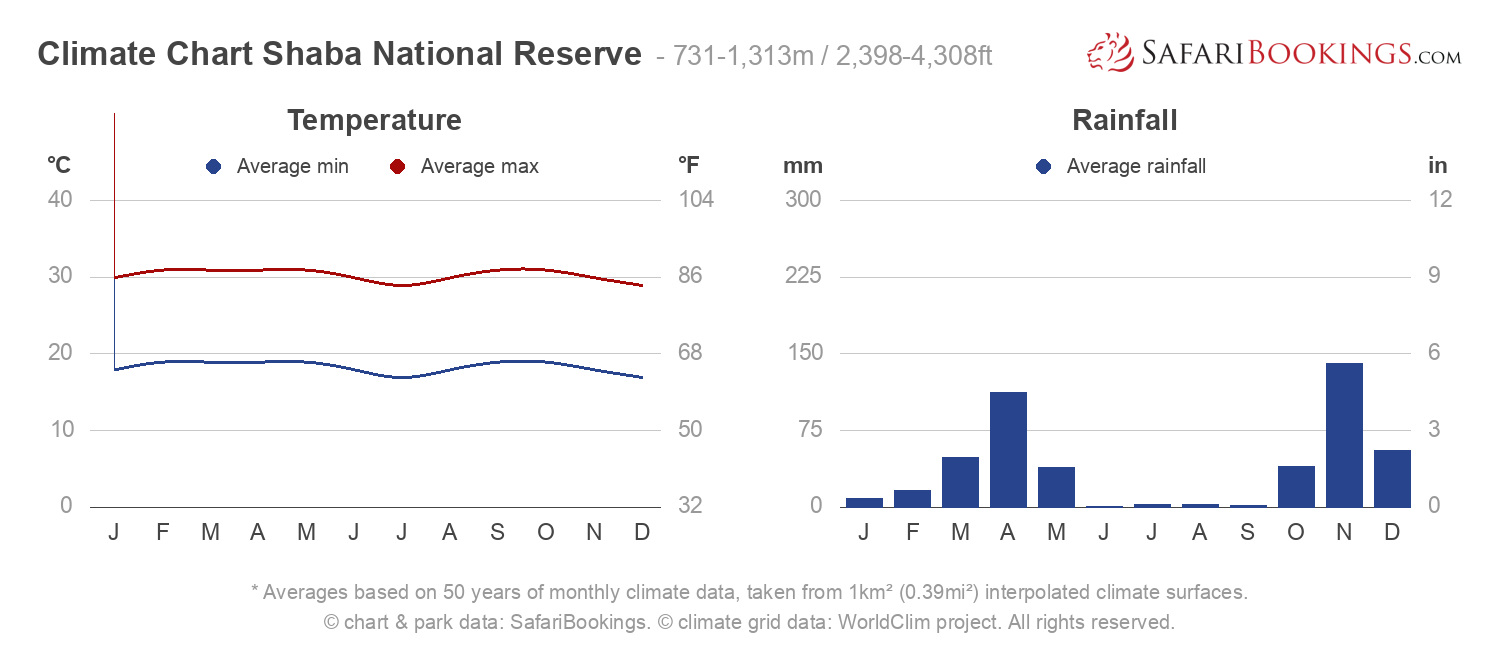- You are here:
- Home
- Countries & Parks
- Kenya Parks
- Shaba National Reserve
- Weather & Climate
Weather & Climate – Shaba NR

Anthony is a renowned Africa expert and author of many Lonely Planet guidebooks, including the guide to Kenya.
Anthony is a renowned Africa expert and author of the Lonely Planet guide to Kenya.
Anthony is the author of the Lonely Planet guide to Kenya.

Climate Chart Shaba National Reserve – 731-1,313m / 2,398-4,308ft
Shaba National Reserve has a hot and dry weather pattern. The average temperatures are 30°C/86°F in the daytime and 18°C/64°F at night. Shaba has a low annual rainfall, which usually occurs as short, heavy showers. The long rains generally occur between mid-March and mid-May, while the short rains fall between mid-October and mid-December. The peak months for rainfall are April and November.
Shaba Safaris


Dry Season –June to September
It is very dry with almost no rain and hot, sunny days.
- June & July – The days are full of sunshine. Afternoon temperatures average around 30°C/86°F.
- August & September – Daytime temperatures rise in the buildup to the breaking rains. During the day in September, it will average 31°C/88°F, although peaks are much higher.
Wet Season –October to May
There are two wet periods: the short rains and the long rains. Separating the rains is a brief dry spell during January and February.
- October, November & December – ‘Short rains’ – The rains frequently break sometime in October. November is one of the wettest months. Storms in the afternoon are typical. The average temperature is 30°C/86°F, but it gets higher prior to rain and cools down afterwards.
- January & February – This dry patch separates the short and long rains, but its beginning and duration is unpredictable. February is the hottest month. The average afternoon temperature is 31°C/88°F and it peaks higher.
- March, April & May – ‘Long rains’ – The long rains typically begin to fall in mid- to late March. While it rarely rains all day, brief afternoon showers are common. April is the wettest month. Roads become slippery and driving conditions worsen. Afternoon temperatures are around 31°C/88°F.


 Kenya Parks
Kenya Parks